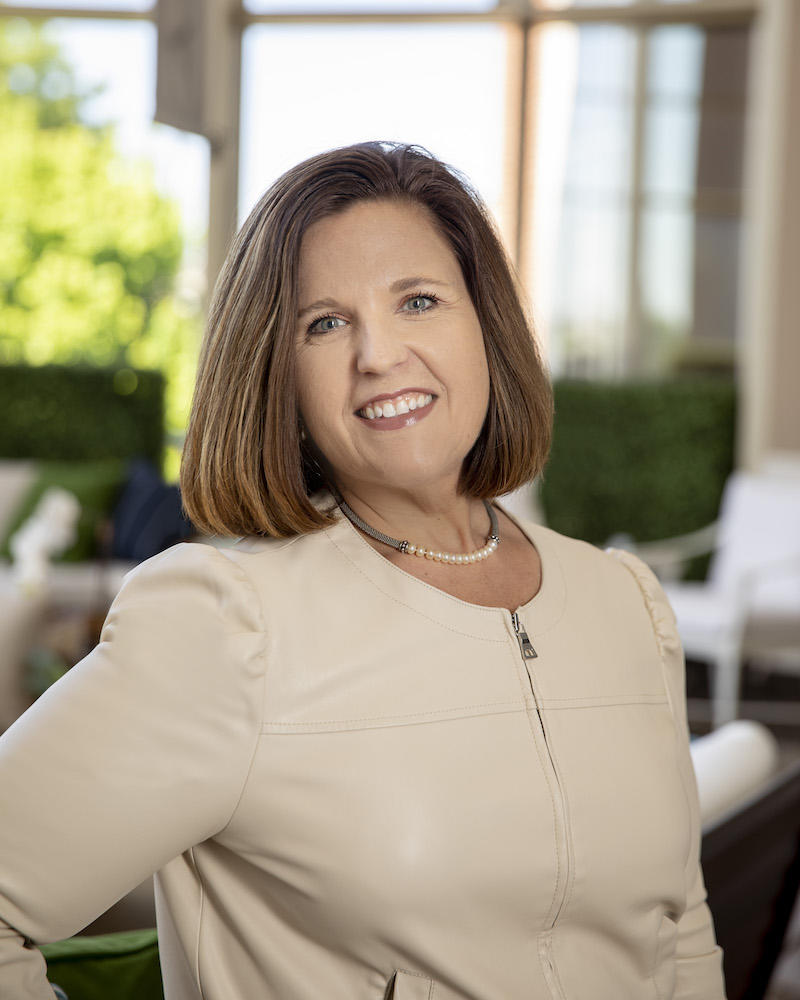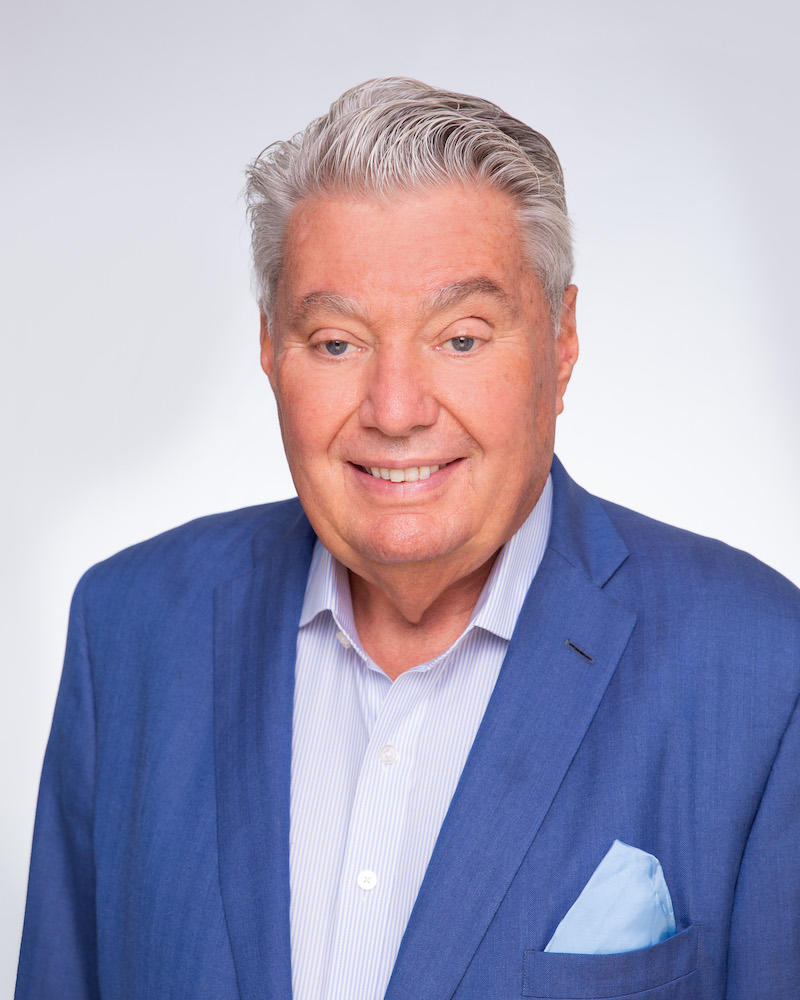This week, the High Point Market Authority announced that longtime CEO Tom Conley would be retiring at the end of the year. Conley’s 11 years in the top spot has coincided with an unprecedented period of change for the 113-year-old market, spanning the aftermath of a recession, the rise of interior designers as its largest customer base and the show’s first cancellation since World War II. Through it all, Conley has been a steady hand on the tiller, maintaining the event’s status as the premier global furniture trade show and helping it near the heights of pre-recession attendance.
The choice of replacement suggests an appetite for more of the same. Tammy Nagem, HPMA’s COO since 2011, will assume the role of CEO on January 1, 2023. A veteran of the market, she was HPMA’s second-ever employee and has been with the organization for more than two decades. During Conley’s tenure as CEO, the two worked closely together on the initiatives that have defined the past 10 years in High Point.
Business of Home spoke to Conley and Nagem about shifts in Market demographics, HPMA’s initiatives around equity and diversity, the challenge of staying relevant and how to manage the weight of expectations on a trade show that feels like more than a trade show.
The two of you presided over a major shift in the composition of the market’s attendees. Is today’s Market what you imagined it would be way back then?
Conley: No. Tammy and I did a little bit of looking backward at the number of designers and retailers when I started—it was 35 or 40 percent designers, with the balance being retailers. That number has flipped over the last 11 years, and thank goodness it has. When retailers were struggling, designers gave us critical mass. They also gave this industry a new way to think about getting their products to market. It was something that not a lot of our manufacturers and retailers had thought about, quite frankly. Now that’s all they think about.

Is there an ideal balance between buyers and designers?
Nagem: I don’t know that there’s a perfect balance. For us, it’s really about getting folks who are coming to High Point to better their business, and that means new product, education, networking—all the things that we strive to provide as an experience. It’s about making sure that when they sit down on that plane or get back in their car to drive home, they say, “You know what? That was worth doing. That was worth being there, and tomorrow morning I’m going to wake up a better business person because of it.”
HPMA doesn’t officially put them on, but where do off-Market events like Premarket or High Point x Design fit into that vision?
Conley: Premarket is not a Market Authority–sanctioned event, but we provide some staffing and try to provide some leadership where we can. It was very interesting during the height of COVID-19 to see Premarket surge the way that it did, and not only in terms of the number of exhibitors who claimed to be open, but also the number of buyers—both designers and retailers—who came to town for it.
Premarket and High Point x Design are two very valid, unique experiences [outside of the traditional Market calendar]. Will they survive going forward? TBD. But I certainly applaud them for what they’re doing. And the Market Authority has been fully supportive. We try to help where we can, but I think it’s critical that everybody understands that we are chartered—and we get money from the state and the city and the county—to put on a twice-a-year trade event called High Point Market.
Tammy, what are you most looking forward to and what comes next in taking on this new role?
Nagem: Tom has helped focus this organization and given us the guardrails as a team to measure what we are doing, look at our successes, look at our challenges and decide what’s next. We have had a very strong team under Tom’s leadership, and I look forward to hopefully taking it to the next level—continuing what’s working and trying to keep my finger on the pulse of this ever-changing industry. We’ve got to make sure we stay relevant.
How are you measuring success as you move forward?
Nagem: Tom and I often talk about it being a numbers game in terms of how many boots are on the streets. In the trade show business, that’s how you’re measured. But I would rather be measured by how many folks really go back to their desk and say, “Gosh, that was really worth it.” That’s what makes the difference—that call from a buyer who says that someone they met in High Point, or something they heard, has made the difference in their bottom line.
The press release announcing this transition mentioned that a vice president of marketing hire is imminent. What does that mean for what’s next?
Nagem: My background was operations, so when Tom came in, he raised his hand to be the one to marshal the marketing side of what we do. That’s been how we’ve operated for 11 years. So for me, it’s getting someone that can bring a strategic level of marketing to continue the work that we are doing and take us into the next 11 years.

What does marketing entail for the Market Authority? What does it mean to market High Point Market?
Conley: One of the things we learned early on is that when we make a statement extolling our virtues, everybody says, “Well, of course—you’re paid to do or say that.” And that’s really true. So we’ve taken the attitude that third-party voices and third-party recognition is really the best, and we’ve tried to get people and organizations to support our mission—whether it’s our Style Spotters, or any of the tours that we do, or somebody on social media saying, “I’ll see you there” or “Let’s meet at the bar at the Proximity.” We view all of that as a good thing.
The Market Authority was criticized last year when an all-white Design Bloggers Tour team debuted on Instagram. I know there have been some DEI initiatives in the works—how does that factor into plans for the future of the market?
Nagem: We have put together a group chaired by Patti Carpenter that is having some conversations, and we’ve hired a consulting group called Change Often to help us navigate those processes. We’re trying to be very thoughtful and deliberate as we go through this process. We will have a lot more to talk about after Fall Market in October as we begin looking at their plans. But the way we’re looking at this is that this is work for our industry. Our job is to coordinate a trade show, but we are only as good and only as effective as the industry that we represent. So we’ve taken on this larger charge to look at diversity across our industry—to ask the hard questions about what needs to happen with DEI and how we can contribute to that.
Something you said just struck me completely: “We coordinate a trade show.” I think so often people think of High Point as the epicenter of the furniture industry—they talk about High Point Market differently than they would about, say, ICFF.
Nagem: Which is a great thing and a not so great thing, right? Many years ago, we had a small booth at the Cologne show, and what struck me was, all these people walking by would point and say, “High Point, America.” We have a built-in brand from 113 years of Markets, and that has helped us remain a relevant show. But you’re exactly right that sometimes the weight of that is more than the change we can effect.
What are the most immediate challenges that lie ahead—for the market and for the industry at large?
Conley: I think there are two separate issues. For the Market Authority, it’s always: Will the money be there? We get a little bit of funding from the industry, but we rely so heavily on state funding. Back when we were only doing $4 million in annual revenue, we could boast about this public-private partnership where we got money from the state, the county and the city, and then the exhibitors paid 15 cents per square foot [of showroom space] as an excise tax that went through the city and came back to us. That money is a lot smaller as a percentage of our total budget than it was way back when. So keeping us funded, I think, is absolutely critical—especially because there’s so much more that we have to do.
Another thing—and it’s well beyond our control, but—if there were some way that we could help the exhibitors understand that there’s a brave new world out there. … The buyers get it, but I think the exhibitors tend to lag here. Let’s face it: The retailers that have survived have done so because they’re really smart and know what they’re doing. The designers that have survived are the same way. Those folks are not going to suffer fools. We need to make sure that the exhibitors and the town are prepared for this new buyer—one who is younger and smarter and has very definitive needs. And doing all of that, by the way, with a very small budget. I will never forget the day that somebody from IMC told me that their budget to market just the Las Vegas Market was twice as much as our total budget. We’re competing to a certain extent with other markets, but without the same resources. Thank God we have this long legacy of providing good things, but you can’t go on that forever. Sometimes you just have to perform.
You said there’s so much more that you have to do with that budget than in the past. How have the Market Authority’s responsibilities expanded?
Conley: I’ll give you a prime example: Tammy has brought the buses in-house. She’s supervising a lot more individual people and services than we’ve had in the past. We have a new marketing agency, she has hired a new IT coordinator—it’s streamlining the operations and better understanding all of the segments that make up this market. Then, it’s doing the sales pitch to not only the buyers but also the sellers.
Tammy, what about you? What challenges do you see on the horizon?
Nagem: If you pull back even further, it’s making sure that there is still an appetite for that in-person business. Today, I think there is—but as Tom said, if you look at the younger generations that are coming into the industry, even the trade buyers, will they feel the need to sit on that sofa or touch the fabric? My dad worked for Bassett Furniture for 36 years, and we never went into a neighbor’s house where he didn’t run his hand over the veneer of some case good or open drawers to look at who made things. I mean, it was embarrassing, but that’s in my DNA. But I’m not so sure that will be the case going forward.
I would love to think that what High Point is able to do is feed that sense of belonging [in the industry]. I want you to come here to be around people like you, and maybe you learn something from them—or at the very least, you walk away with a greater appreciation for the industry that you’re in. I’m not sure you get that from a Zoom call. I feel like we have to do a better job at communicating that, and also demonstrating why you have to be here. I think that is going to be a huge challenge for us.
What are you most excited about as you look ahead?
Nagem: I’m excited to be the one to guide this ship because I have sat as number two for a long time. I’m excited to see what is in store for this market and really continue to focus our efforts on being the home for home furnishings.
Homepage photo: The esplanade at the heart of High Point Market, with Showplace in the background. | Courtesy of High Point Market Authority





























